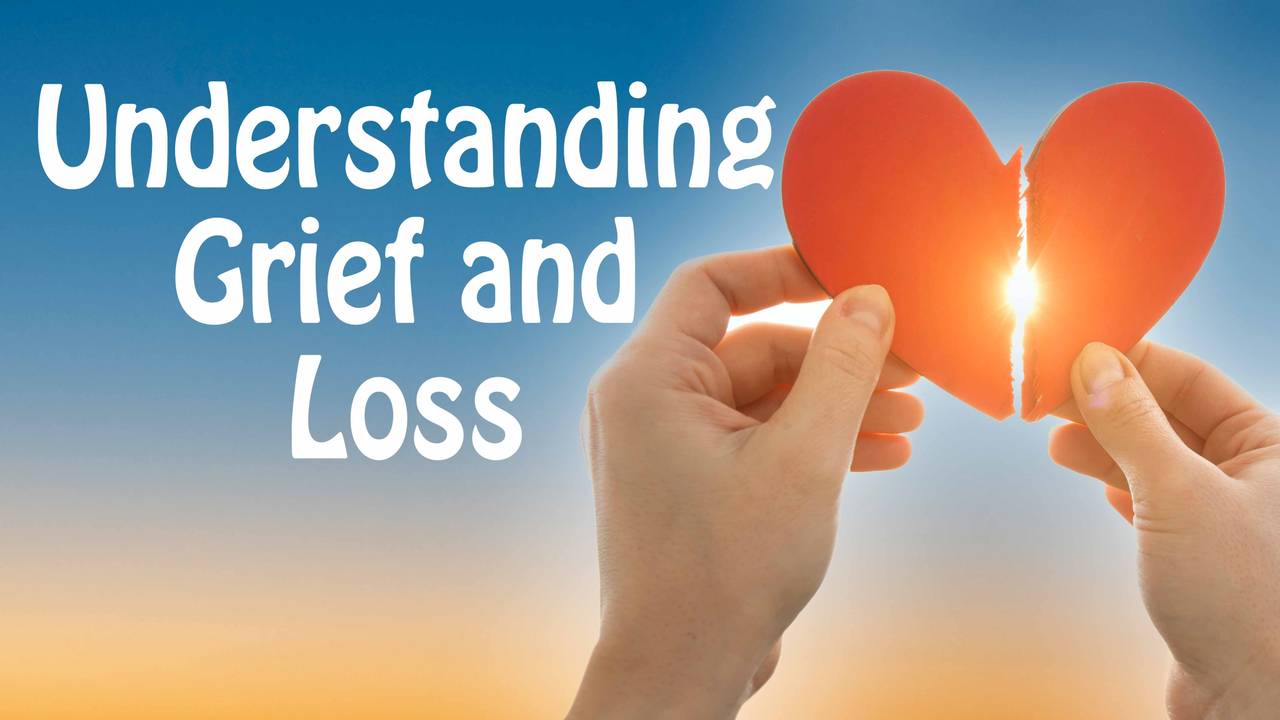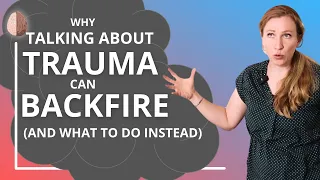What happens when you don’t process your grief? What happens when you avoid dealing with loss? In this blog, you’ll learn seven signs that you’re not processing your grief and three ways you can face your grief in small steps.
People say that time heals, but I would argue that it doesn’t — unless you allow yourself to work through your pain little by little.
Now, it’s clear that each person’s grief is unique. There isn’t a concrete set of steps you can do in order. There isn’t a time limit for mourning. But there is a big difference between working through stuff and not working through stuff.
People who process their grief allow themselves to face their pain, even in small doses. They address their feelings. They may write about them or talk about them. They mourn.
When someone doesn’t work through their pain, they try to distract themselves. They keep busy. They desperately avoid their pain, which in the long run leads to more pain.
So we’re gonna learn about seven signs that you’re not processing your grief, and you’ll learn three ways to start to face your grief in small steps.
Online Course on Grief and Loss
Recently I partnered with Sarah Engler, LCSW, to create a course called Understanding Grief and Loss.
She teaches how loss can stem from a loved one dying, but it can also come from many more situations, like a divorce or an expectation that doesn’t happen, a lifestyle change like aging, or a change in employment, and and so many more situations where you may experience strong emotions about losing something that you care about.
In this course, Sarah does a great job explaining how not dealing with your loss can lead to these seven signs.
7 Signs You're Not Dealing With Your Grief and Loss
1. Compulsive Behaviors after a Loss
Number one is compulsive behaviors. This can look like over- or under-eating; excessive spending; addiction to distraction, like endless Netflix binges and social-media scrolling; and, of course, substance abuse.
2. Withdrawal From Relationships when Grieving
The second sign is withdrawal from relationships. You might avoid people because you don’t want to be asked, “How are you doing?” Or maybe you don’t want to be around people if you’re feeling down or you may cry. Whatever the reason, you start to pull away from people.
3. Over-Functioning to avoid dealing with Grief
Number three is over-functioning.
Sarah explains how if you have two children whose parent dies and one of them is tearful and emotional and struggling in school and the other one seems fine, she’s taking care of everyone else, she seems cheery and like she’s adapting, well, the one you should be worried about is the second child.
Some people avoid their grief by pretending that everything’s fine. Or they immerse themselves in work, just keeping themselves busy to distract themselves.
4. Irritability
Number four is irritability. This looks like conflict in relationships. Sometimes things like drama and fighting can be a great distraction from internal pain, or it just can be a twisted expression of that pain.
So just think of, like, some adult siblings who are mourning the loss of their beloved parents. If their pain seems unbearable, it may be more comfortable to fight over the inheritance than to sit with that pain.
5. Persistent Sleep Issues after a Loss
Next is persistent sleep issues. It’s really common to have difficulty sleeping and eating right after a big loss — and again, there’s no time limit — but if these problems persist without being addressed, it’s a sign that you’re not dealing with loss.
6. Physical Symptoms of Grief and Loss
Next is physical symptoms emerge. So sometimes the body keeps the score when emotional pain isn’t addressed. That pain can show up in illnesses, digestive issues, muscle tension, headaches, high blood pressure, and other physical symptoms.
7. Worsening Mental Health after Losing Someone
And lastly, mental health symptoms worsen. So grief is not a mental illness. Mourning is not a mental illness. It’s okay to feel sad and to struggle and to not function normally after a loss.
But when we don’t get the support we need or when we don’t take care of ourselves or address our grief, then that can drop people out of a normal grief process into depression, suicidality, anxiety, or other mental health conditions.
3 Things You Can Do to Deal with Grief
Now, like I said before, there is no timeline for this stuff. There’s no simple magical process that you can just work through that will magically make your grief go away.
The difference between people who start to heal and those who avoid their grief is do you lean in or do you lean out? So when big emotions come up, do you desperately seek to avoid, numb, suppress, or distract, or do you face them, even if in little doses?
So that doesn’t mean that you have to just drown in your grief. There’s three skills we’ll borrow from Peter Levine — he’s the founder of somatic experiencing — that you can use to start dealing with your grief: pendulation, resourcing, and titration.
1. Pendulation
So pendulation is when you lean into the emotions; you swing into them; you let yourself feel them — and then you can swing out too, to ground yourself, to get comfort, to take a break and rest. So some distraction is okay as long as you face your pain in regular, tiny doses with as much support and resources as possible.
So a healthy nervous system can do both. It can swing in and feel, and then it can swing out and rest. Where an avoidant nervous system just clenches more tightly to avoidance. It’s like, “Oh, I gotta stay over here and never feel anything.” So as we move into and out of our emotions, we eventually integrate those experiences and our capability to handle them.
So you may take some time to face your intense grief, to ugly cry, to scream, yell, shake, sob — and then you take some time to wrap up in a blanket and curl up with your spouse or your dog and watch some funny internet videos before you fall asleep.
It doesn’t mean that to process grief you have to be sad all the time or let your emotions run your life. Pendulation means that you can just address them in these small chunks and then swing back out.
2. Utilizing a Resource after a Loss
The second skill is resourcing. This is adding support to yourself while you face your pain.
So instead of avoiding thinking about your loss or avoiding visiting the grave, you consider bringing someone with you to support you while you visit the grave. Or after you have a hard anniversary, maybe you find something that’s really soothing for your body, like a hot bath or a massage or an exercise that feels good.
So we’re just adding resources to help strengthen you as you face this painful experience.
3. Titration
The third skill is titration. And that just means doing things in small doses. So for example, if you need to work through some old memories or papers, set yourself a time limit to face your pain, and then take a break and come back to it after a rest. So you can just try to face your pain in small doses. Now, I know this isn’t always possible, but it’s one thing you can add to your toolkit.
Sending all my love to those of you out there who have experienced a loss, and I hope this helps in some small way.
If you’d like to learn more about Sarah Engler’s course, please check out this link. Thank you for watching, and take care.





